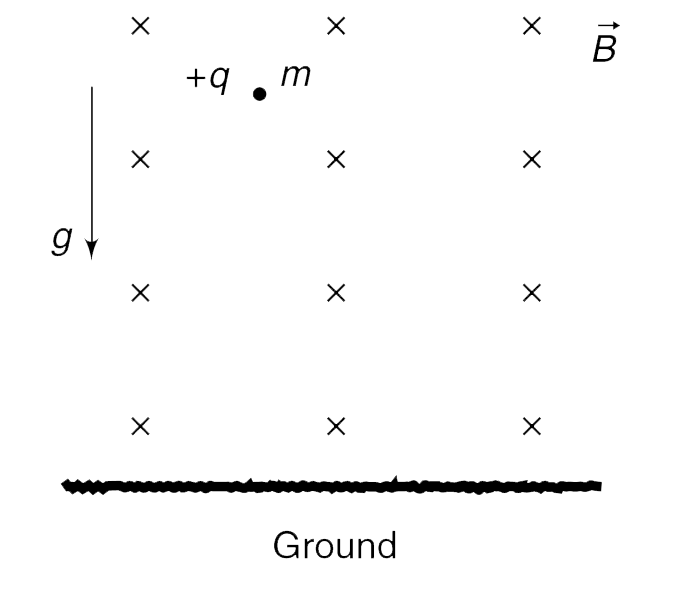Account for the following :
(a) The temperature of water remains constant during boiling.
(b) Evaporation is a surface phenomenon.
(c ) The spaces between constituent particles is maximum in the gaseous state.
(a) Once a liquid starts boiling, there is no increase in average kinetic energy upon further heating. The heat now supplied is used to overcome intermolecular forces only. Therefore, the temperature of water remains constant during boiling.
(b) Molecules or particles of a liquid present on the surface have an urge or desire to escape from the surface as vapours in order to increase their free movement or randomness. This is known as evaporation. Thus, evaporation is a surface phenomenon. More the surface area available more will be the rate of evaporation.
(c ) In the gaseous state of matter the interparticle forces are the least. Therefore, interparticle spaces are the maximum.
Topper's Solved these Questions
- MATTER IN OUR SURROUNDINGS BOOK - DINESH PUBLICATIONCHAPTER - MATTER IN OUR SURROUNDINGS EXERCISE - Higher Order Thinking Skill
4 Videos
- MATTER IN OUR SURROUNDINGS BOOK - DINESH PUBLICATIONCHAPTER - MATTER IN OUR SURROUNDINGS EXERCISE - Test Your Knowledge
42 Videos
- MATTER IN OUR SURROUNDINGS BOOK - DINESH PUBLICATIONCHAPTER - MATTER IN OUR SURROUNDINGS EXERCISE - Short Answer Questions
41 Videos
- IS MATTER AROUND US PUREBOOK - DINESH PUBLICATIONCHAPTER - IS MATTER AROUND US PUREEXERCISE - LAQs
10 Videos
- STRUCTURE OF ATOM BOOK - DINESH PUBLICATIONCHAPTER - STRUCTURE OF ATOM EXERCISE - Long Answer Questions
6 Videos
Similar Questions
Why does the temperature remain constant during the boiling of water even though heat is supplied continuously ?
View SolutionHow will you account for the following :
(a) Density of a substance in the solid state is more than in the liquid state.
(b) Ice floats over water although it is a solid.
(c ) Diffusion is maximum in the gaseous state of a substance.
View Solution
Knowledge Check
A primitive diving bell consists of a cylindrical tank with one end open and one end closed. The tank is lowered into a freshwater lake, open end downward. Water rises into the tank, compressing the trapped air, whose temperature remains constant during the descent. The tank is brought to a halt when the distance between the surface of the water in the tank and the surface of the lake is 40.0 m. Atmospheric pressure at the surface of the lake is 1.01×105 Pa. Find the fraction of the tank's volume that is filled with air.
A0.205B0.333C0.257D0.435
Account for the following:
(a) Boiling points of carboxylic acids are higher than those of corresponding alcohols.
(b) The C-O bond in R-COOH is shorter than in R-OH
(c ) Acetic acid in the vapour state has a molecule mass of 120.
View SolutionWhy does temperature remain constant as heated liquid gets converted to its gaseous state at its boiling point ?
View SolutionIn the photoelectric effect, suppose that the intensity of the light is increased, while the frequency is kept constant. The frequency is greater than the minimum frequency f0. State whether each of the following will increases, decrease, or remain constant, and explain your choice. (a) the current in the phototube, (b) the number of electrons per second from the metal surface, c) the maximum kinetic energy that an electron could have, d) the maximum momentum that an electron could have, and e) the maximum de-Broglie wavelength that an electron could have.
View SolutionA particle having charge q and mass m is dropped from a large height from the ground. There exists a uniform horizontal magnetic field B in the entire space as shown in the fig. Assume that the acceleration due to gravity remains constant over the entire height involved.

(a) Argue qualitatively that the particle will touch a maximum depth and then start climbing up. lt brgt (b) Find the speed of the particle at the moment it starts climbing up.
(c) At what depth from the starting point does the par- ticle starts climbing up?
View SolutionTwo strange particles A and B in space, exert no force on each other when they are at a separation greater than x0=1.0 m. When they are at a distance less than x0, they repel one another along the line joining them. The repulsion force is constant and does not depend on the distance between the particles. This repulsive force produces an acceleration of 6ms–2 in A and 2ms–2 in B when the particles are at separation less than x0. In one experiment particle B is projected towards A with a velocity of 2ms–1 from a large distance so as to hit A head on. The particle A is originally at rest and the system of two particles do not experience any external force.
(a) Find the ratio of mass of A to that of B.
(b) Find the minimum distance between the particles during subsequent motion. (c) Find the final velocity of the two particles.
View SolutionExplain giving reasons for the following:
(a) Photoelectric current in a photocell increases with the increase in the intensity of the incident radiation.
(b) The stopping potential (V0) varies linearly with the frequency (v) of the incident radiation for a given photosensitive surface with the slope remaining the same for different surfaces.
(c) Maximum kinetic energy of the photoelectrons is independent of the intensity of incident radiation.
View SolutionExplain giving reasons for the following :
(a) Photoelectric current in a photocell increases with the increases in intensity of the incident radiation.
(b) The stopping potential (V0) varries linearly with the frequency (v) of the incident radiation for a given photosenstive surface with the stop remaining the same for different surfaces.
(c) Maximum kinetic energy of the photoelectrons is independent of the intensity of incident radiation.
View Solution
